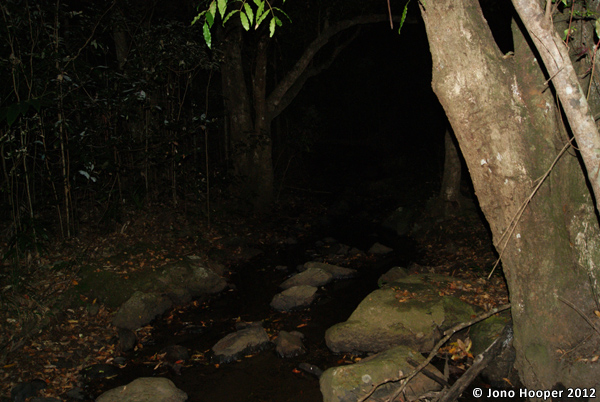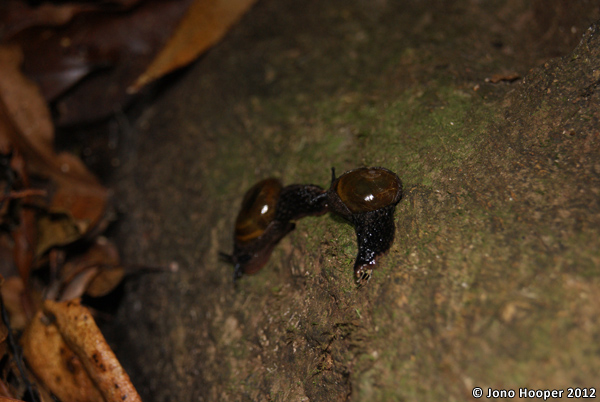I headed out with QPWS Ranger, Rowena last night to assist with frog monitoring at two sites within the Blackall Range. Temperatures have and are increasing during the day, however the nights are still cool (darn remnants of Winter). Our first site was in Mapleton Falls National Park, of which the Ranger’s Ford Ranger had no trouble travelling along the firetrail to the creek. These vehicles can go anywhere, literally! Mind you, the trail was fairly easy-going at this point because it was dry.
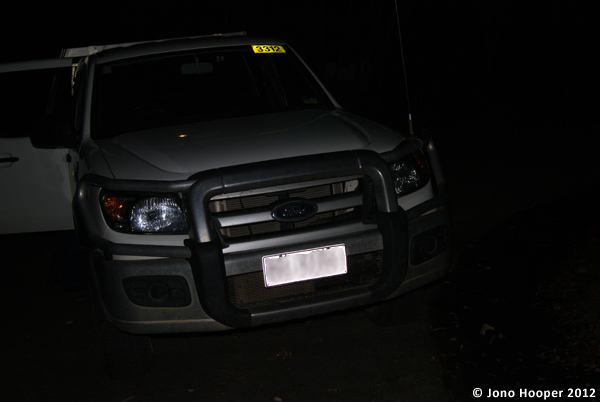
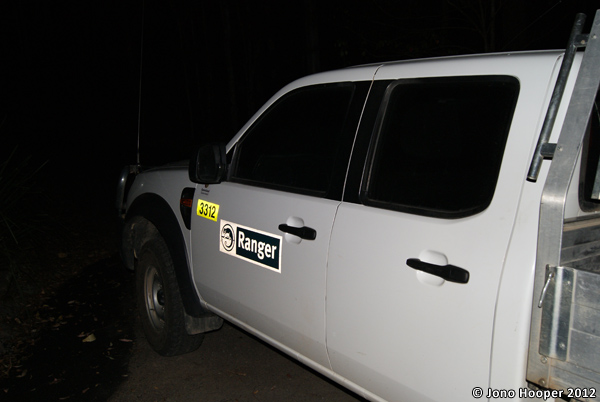
Anyway, once we walked to the creek we listened for what we could hear.
‘Wark’. Cool! A Mixophyes iteratus (Giant Barred frog). We didn’t hear him straight up though. That was nice to hear him, since we weren’t expecting to see or hear much due to the cool temperature and absence of rain in the days prior. Whilst we’re listening to him and testing water temp etc, I hear another ‘Wark’ on our side of the creek. Two Giant Barred frogs – great! Too bad they were both off the transect. (POST POSTING: It’s only just now that I’ve realised after emailing Rowena today that the barred frogs mentioned above were M. iteratus. Last night I thought they were M. fasciolatus. Even more reason to be excited since these frogs are endangered). We could hear a Adelotus brevis (Tusked frog) calling, but he went silent later. We didn’t hear or find anything else at this site. However, after rain, Rowena said the frogs are often found amplexing everywhere! On my to-do list. This site was also once home to Taudactylus diurnus (Southern Dayfrog), last seen some 30-odd years ago.
The second transect we went to was one within Kondalilla National Park. On arrival it was obvious this site was a little cooler, and temperature measurements confirmed this. What would we find? Rowena was the first to spot a frog on some vegetation. It was a male or female Litoria wilcoxii (Stony-creek frog). It wasn’t the characteristic bright yellow that the males are often coloured in, but it was small like a male. So, it was recorded as an ‘it’ of this species (or something like that!).
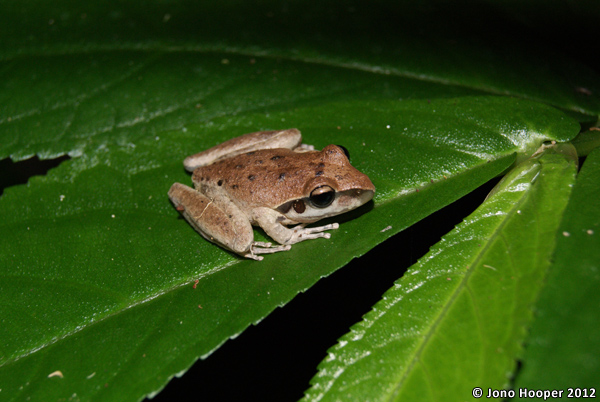
We continued our searches while Rowena was telling me that this site too was home to both Taudactylus diurnus (Southern Dayfrog) and Rheobatrachus silus (Southern Gastric-brooding frog AKA Platypus frog). Interesting stuff! The creek was running over the large rocks/small boulders just enough to mute any possible frog calls. Whilst we’re searching, Rowena says “I keep thinking I’m hearing something…and I don’t know what the call of the dayfrog sounds like…”. I think I began searching a bit more thoroughly after that. The northern dayfrog species is often found under boulders on the cool, moist soil or in pools of water. Once home, I listened to the call of the northern species (still around today, though endangered), just to train my ears (just in-case…). It would certainly be awesome to find either of these two ‘missing’ species.
